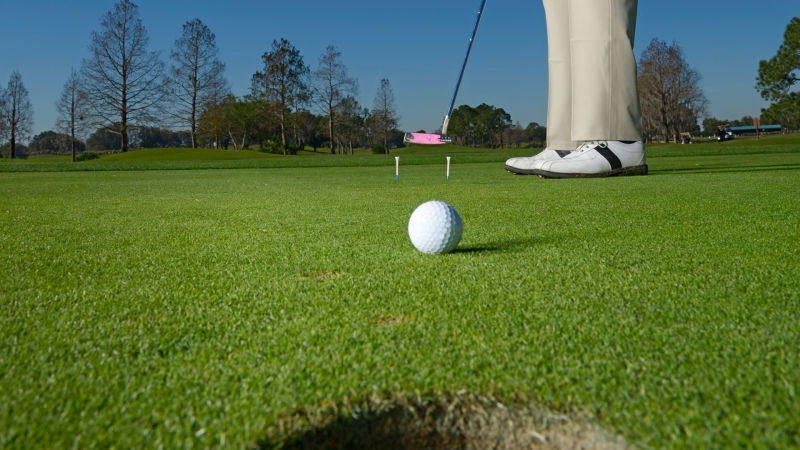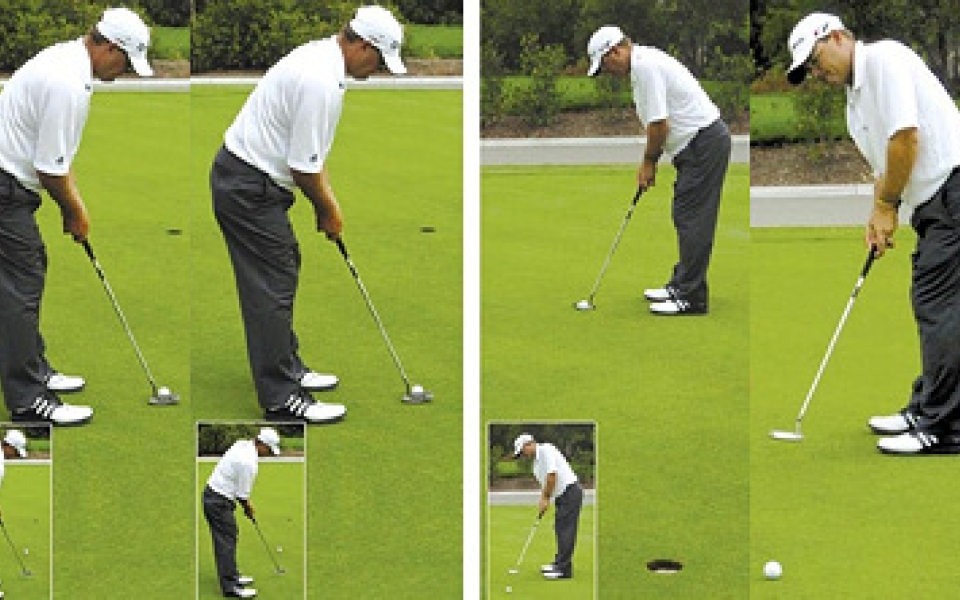One of the best courses in the region, Misaki CC can be enjoyed by all levels of golfer and welcomes foreign guests. Misaki is located just 30 minutes...
Latest advice

Osaka's Best Golf Shops
Osaka Is Japan's second-largest city, located in the Kansai area in West Japan. It is a particularly popular golf destination with 34 courses in its immediate vicinity but is situated also ideally next to Kyoto, Kobe, and Mie which combined have over 100 courses, not to mention the extensive
The Art Of Putting
The goal in putting is quite simple -- get the ball in the hole in as few as shots as possible. There is no question that many different styles are possible in trying to do this. If you walk onto a practice range at a PGA tournament or turn on the TV to watch the PGA tour players of today, you will still see some very creative looking actions. However, the majority of the TOUR players today still look very conventional.
Three important COMMON DENOMINATORS in Great Putters.
- The ability of the golfer to correctly measure the effects of the greens undulation of the ball.
- The ability of the golfer to apply the correct amount of force required for the ball to travel to the hole in accordance with point #1.
- The ability of the golfer to hit the ball with a square club face, along the chosen line.
The skill of the A grade player and professional are as such that their average total putts for 18 holes is fewer than 30 putts, whereas the average player will generally total around 36 or more.
The fact is that Putting is a part of the game in which anyone can excel; it takes no great strength, just sufficient knowledge on how to gain the technical skills necessary for a consistent putting stroke.
Whether you are trying some different styles or just the basic conventional look, there are some similarities between them all that enable these guys to average under 30 putts every day of the year. These similarities make up the fundamentals of putting which makes it easier to hit putts squarely ensuring the proper roll.
The five lines of putting
I generally like to begin with building the proper setup first. Much like the golf swing, this will ensure a solid foundation to be built upon.
The proper putting stroke will be easier to achieve from the proper setup. It is important to understand that the proper putting stroke is one that moves on an arc - not a straight line. However, I want this arc to be natural -- and one that you don't have to think about.
It is best to create an environment where you can be instinctive rather than mechanical. This will allow for better feel and distance control, resulting in more made putts as well as minimal three-putts.
Proper Setup
The putter head needs to achieve its natural arc to perform properly.
Putting begins like all other shots in golf at the setup position. Setup to the ball properly, and you have a better chance to hit the ball squarely and be instinctive on the golf course.
Trying to keep the putter face square to the target line and trying to rock the shoulders back and thru are concepts that just don't make sense biomechanically. Good putters have common denominators, their strokes are mechanically simple, they have proper path and loft. Rolling the ball correctly requires these two things.
The things that create path and loft are Posture and how the arms or more specifically the angle of the arms and shaft relate to the posture at setup. Just Like the golf swing, if the golfer is not set up with the correct angles it is impossible for him to move in the right direction.
When working on correct posture, consider bending from the hips and maintaining a straight spine, this allows the body to turn on the angle of the spine, without good posture it is impossible for the body to turn in the right direction.
Ask for a video check-up of your posture to ensure that you are set up in a way that your arms can work in the right direction.
I will break the set-up down into the "five lines" at address. Not only do these lines secure the proper setup position, but they will also allow you to be fit for the proper length of putter as well. The five lines at address are, as follows:
1. The putter shaft in line with the forearms
It is important that the putter shaft is on the same plane of the forearms. This will allow the arms and putter shaft to move together and consistently within the stroke. To achieve this alignment, you must grip the putter more through the palms -- not the fingers.
2. The hands positioned directly under the shoulder line
To do this, you must bow forward from the hips, allowing the upper body to face the ground. This will allow the hands to sit under the shoulder line and clear of the body. It is recommended that your elbows are bent and no tension in the arms or hands.
3. The eyeline
Once you have bowed forward from the hips, secure the positioning of the eyes over the golf ball. It will be easier to see the line with your eyes on that line or just to the inside of the target line, (depends on the eye dominance). Eye line, shoulder line and elbow line parallel, (square) place feet in comfortable position.
4. The weight should be balanced on the middle of the feet
Once your eyes are over the golf ball, you then want to position your feet the correct distance from the golf ball so your weight is felt in the middle of the feet, (balls of the feet). If you stand to close to the ball then your weight will be on the heels. Conversely, if you're too far from the golf ball, your weight will be on your toes.
5. The putter shaft should lean towards the target / Handle ahead of club head
In doing so, your putter face will have roughly four degrees of loft which is needed for the proper roll. If you like to lean the putter shaft backward at address, then you will effectively have increased the loft of the club face.
As I mentioned before, the putting stroke is one that moves on an arc. Achieving these five factors at address will allow for this to happen a lot easier. Although the arc is small, it can be very apparent to some people due to the efforts of trying to keep the putter head straight back to straight through.
We often get caught up in the gossip of rocking the shoulders, which results in this poor putter head path.
Regardless the situation, the putter head needs to achieve its natural arc and these five factors at address will only promote it.
Tom has over 29 years of experience coaching in Australia, Japan, & SE Asia culminating in appointments as national coach in both Malaysia and Singapore, and has also been listed in the top 50 golf coaches in Australia. A Master of the "state of the art" swing analysis and other modern methodologies, Tom is committed to providing the most accurate solutions for all your golf improvement needs.
AAA rated member of the Australian PGA and recognized by the Australian Sports Commission as a level 3 coach.
He also teaches at the Mizuno Golf School.
Mail: tom.fielding [at] agolfersguide.com (tom[dot]fielding[at]agolfersguide[dot]com)
Partner Courses
Browse our featured courses renowned for their hospitality!

Accordia Golf Narashino Country Club
習志野カントリークラブ
The host course for the ZOZO Championship on the PGA tour, Narashino Country Club has always been at the heart of tournament golf in Japan. Starting...

Nishifuji Golf Club
西富士ゴルフ倶楽部
A very special course with spectacular views of Mt. Fuji. Although a mountain course, it has a gentle topography so it easy to get around. A woody and...








